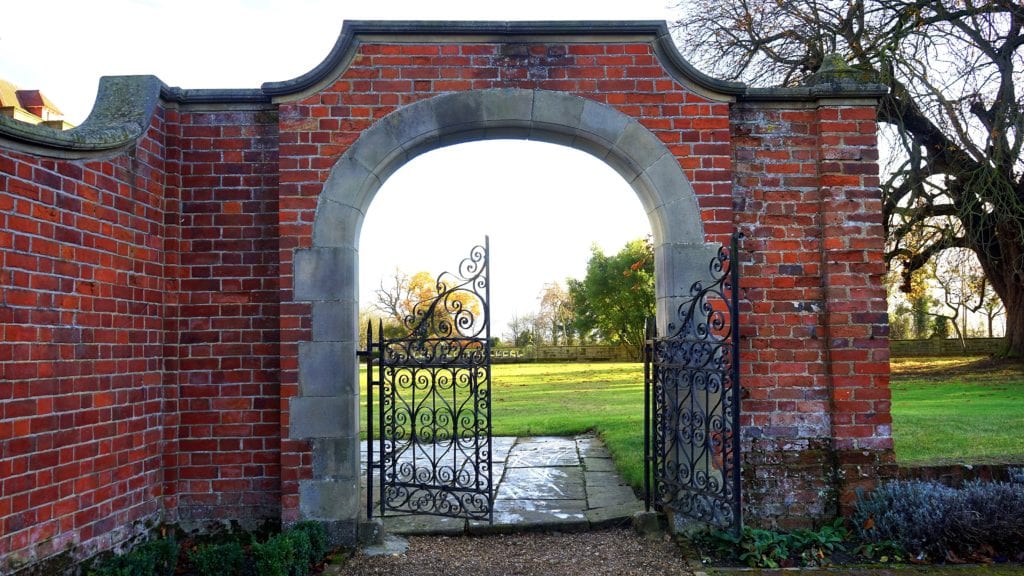
We have learned that the only solution [to loneliness] is love
and that love comes with community.
Dorothy Day
The rusted chain link fence sags in multiple places while its tall iron gate clanks in the Texas wind. Weathered metal letters above the gate spell out “A. S. H. Cemetery.”
This gate provides entry to the Austin State Hospital Cemetery, an 11-acre, minimally maintained field surrounded by urban life in central Austin. Despite being in use for longer than a century and having more than 3000 people buried there, few gravestones dot this mostly barren and unexceptional terrain. Instead, the graves are marked with small, numbered, concrete slabs, meager reminders of seemingly unexceptional lives.
A gated community of forgotten souls symbolizes the isolation and loneliness that many people experience, and not only those who lived with mental illness, who died at the Austin State Hospital, and whose remains were unclaimed. Theirs might be the more severe experiences, but they are surely not the only ones. In fact, as Dorothy Day put it, “We have all known the long loneliness.”[1]
Indeed, we have. Did you know that more than one-third of adults aged 45 and older feel lonely, and that nearly one in four adults aged 65 and older are socially isolated?[2] Social isolation means a lack of contact with other persons and an absence of companionship and support. Loneliness means feeling like an outsider, as though one does not belong, or lacking in desired intimacy, such as friendship, companionship, or romance.[3] Note that these figures pre-date the current global pandemic, where COVID-19 and loneliness go together like rusted fences and forgotten souls.
We also know that loneliness as well as social isolation puts people at risk for serious medical conditions, and especially those over age 50. We know, too, that those who live with Parkinson’s not only experience social isolation and loneliness (about half of us do, in fact), but that those who are lonely tend to have a more severe course of disease progression.[4]
So why are we lonely?
Well, the reasons for isolation vary, but among those with Parkinson’s they include things such as a lack of confidence or sense of significance; self-consciousness about a loss of functioning or changed appearance; and underestimating or devaluing what one has left to contribute to one’s work, social networks, or others’ lives. The studies consistently bear this out.
So do my own experiences, and those of my friends. For example, my heart ached when I once heard a close friend with Parkinson’s who struggled with dyskinesia say, “Why would I attend that party? I’ll just embarrass myself and make everyone there feel uncomfortable?”[5]
When we feel this way about ourselves, we can begin constructing barriers to relationships and connections that we need most, not only to sustain our health, but to give us life. Building these fences and gates around us, though seemingly self-protective and surely an understandable response, actually robs us of much more than Parkinson’s ever should.
I know this because I have felt like my friend did, and my inclination, like his, was to stay away from the party.
But it turns out that we get invited to only so many parties, and that we do not enjoy unlimited opportunities for human connection, relationship, and love. Why? Because we all get only one life to live.
Having realized this, and picturing that rusted fence and clanking gate, I got myself dressed, called my friend, and my wife Tracey and I picked him up and carried him (almost literally) to that party. He had some dyskinetic wiggles; I was stiff, fatigued from a lack of sleep, and not bringing my A game, either. Still, with our limitations, imperfections, and insecurities tethered to Parkinson’s disease, we got ourselves to the party, stood among other limited, imperfect, and insecure people, some of whom were surely lonely, and we enjoyed good food and drink, even better conversation, and lived our life.
Our life.
The only life we get.
Maybe one day I will share this experience with the souls in that cemetery.
To let them know they are remembered.
___________
[1] Dorothy Day, The Long Loneliness, New York: Harper and Row, 1952, 286.
[2] National Academies of Sciences, Engineering, and Medicine, Social Isolation and Loneliness in Older Adults: Opportunities for the Health Care System., Washington, DC: The National Academies Press, 2020.
[3] Erin York Cornwell and Linda J. Waite, “Social Disconnectedness, Perceived Isolation, and Health among Older Adults,” Journal of Health and Social Behavior (2009), vol. 50 no. 1: 31-48.
[4] Ashley Lyles, “Loneliness and Social Isolation Are Risk Factors for More Severe Parkinson’s Disease,” Neurology Today, September 18, 2020.
[5] Dyskinesia refers to involuntary movements of the arms, legs, truck, or face, and includes erratic rocking, jerking, swaying, or fidgeting. Dyskinesia is a side effect of Parkinson’s medications, and not a symptom of the disease itself.
Allan Cole is a professor in The Steve Hicks School of Social Work at The University of Texas at Austin and, by courtesy, professor of psychiatry in the Dell Medical School. Diagnosed with Parkinson’s in 2016, at the age of 48, he serves on the Board of Directors at Power for Parkinson’s, a non-profit organization that provides free exercise, dance, and singing classes for people living with Parkinson’s disease in Central Texas, and globally via instructional videos. He also serves as a Community Advocate for ParkinsonsDisease.net, writing columns about living well with Parkinson’s. He is the author or editor of 10 books on a range of topics related to bereavement, anxiety, and spirituality. His latest books, Counseling Persons with Parkinson’s Disease (Oxford University Press) and Discerning the Way: Lessons from Parkinson’s Disease (Cascade), will be published in 2021. Follow him on Twitter @PDWise.
